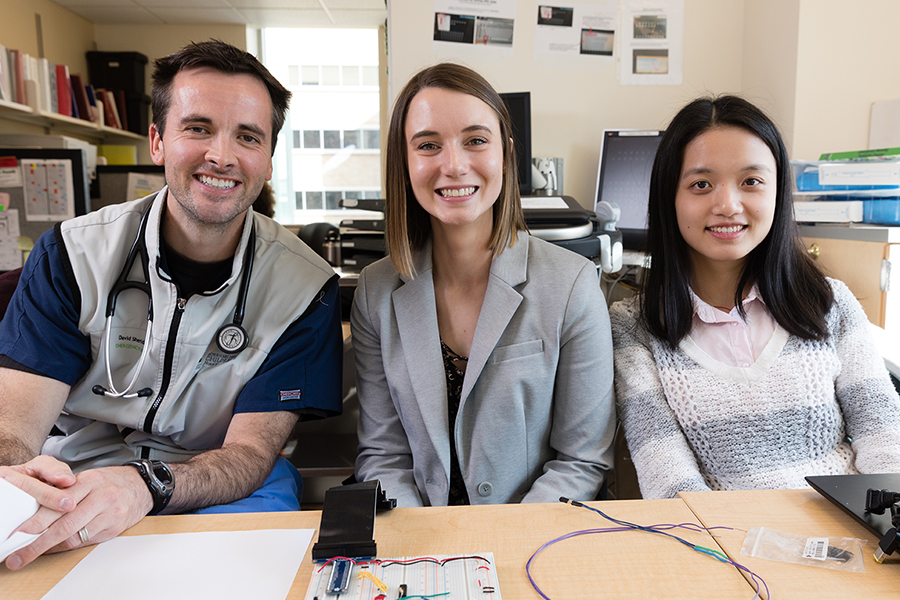
Engineering
April 3, 2018

At Oregon Health & Science University, Dr. John Ma, chair of emergency medicine, is the co-founder with co-directors Dr. David Sheridan (’04, Biology) and Dr. Matt Hansen, of IDEA EM, a team of emergency medical physicians tasked with developing clinically relevant, and eventually commercial, medical innovations. “Clinicians know what we need to benefit our patients, but we aren’t engineers,” noted Sheridan. “So we’ve built relationships with industry partners with whom we can produce innovative solutions to improve patient care and the healthcare system.”
After reading about University of Portland’s master’s in biomedical engineering program in Portland magazine, Sheridan realized partnering with his alma mater could offer mutual benefits. He reached out to Shiley School of Engineering dean Sharon Jones and proposed a unique, hands-on collaboration. Every year a team of biomedical engineering graduate students under the supervision of Kathleen Bieryla, assistant professor of biomedical and mechanical engineering at UP, would be tasked with developing an innovative, clinically relevant product. Working closely with the IDEA EM team from OHSU to identify a clinical need, the students’ goal will be to produce a working prototype which can then be clinically tested.
The first students to participate in the partnership are Sam Wallace ’18 and Haixin Lu ’19. The program immerses the students in the emergency department with Sheridan and the OHSU clinical faculty. The direct clinical experience helps them understand why the identified clinical need exists and how it is evaluated in actual patients.
Interacting with Sheridan and Hansen in the emergency room gave the two future biomedical engineers a rare, first-hand look into the world of clinicians. “This isn’t an experience I’ve had before as a student,” said Wallace. “Learning, as engineers, how to work with physicians is critical because they are the end-users of the products we create and we tend to communicate so differently in our chosen fields.”
“A lot of people think they can visualize what doctors do during their shift but in reality there are many small details that you miss out on that are very important to the job. Actually observing them and having the chance to ask questions is an invaluable learning experience that you can’t honestly get anywhere else than by interacting directly with them,” said Wallace. “You are able to pick out pieces of their daily tasks that could be improved by biomedical engineers that the doctors may not be able to see themselves. Doctors can point out things to you that as an engineer you may not think about. Doctor-engineer interactions are very important for the field of biomedical engineering, and I have learned a lot from working on such a multidisciplinary team.”
The students expect to have a working prototype ready for clinical testing this spring.
Sheridan plans for this to be the first in a series of on-going collaborations with the Shiley School of Engineering and has already submitted ideas for next year’s project(s). “It is very exciting to bring together two first-class universities in Portland to improve the care provided to the city and region.”
University of Portland
5000 N. Willamette Blvd.,
Portland, Oregon 97203-5798
503.943.8000
This website uses cookies to track information for analytics purposes. You can view the full University of Portland privacy policy for more information.
